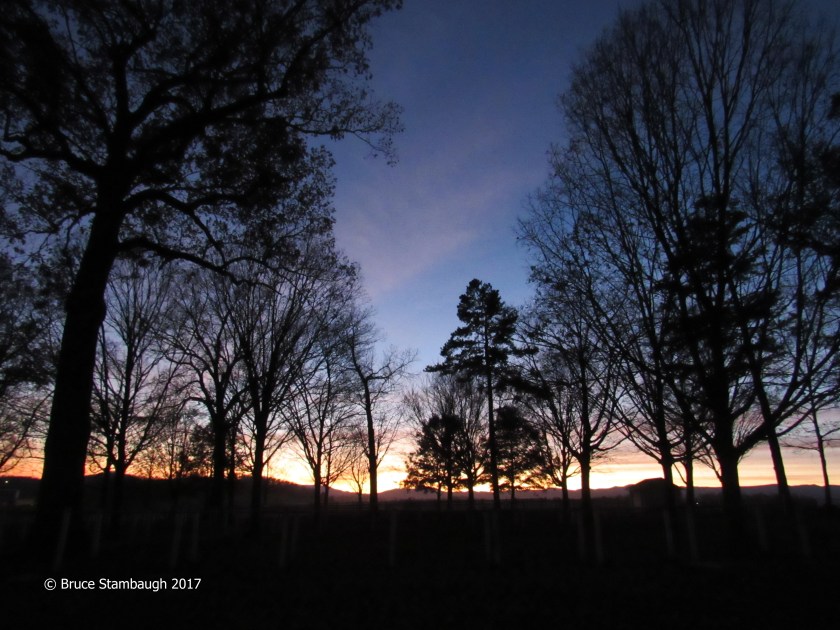
December’s mainstay holidays are cloaked in mystery and miracles. Darkness to light summarizes the current holiday season theme regardless of which ones you observe.
Hanukkah, Christmas, and even the winter solstice share those common qualities. They each come with their own history, a bit of mystery, and a requisite for reverence. The three even overlap in time, traditions, and symbols.
Hanukkah and Christmas each have deep, overlapping religious roots, while the winter solstice has pagan origins. All three, however, connect winter’s darkness with some concept of light. In fact, the triumvirate celebrates light in authentic, yet distinctive practices.
 Besides illuminating light in the year’s darkest time, this triune of holidays has another commonality. The celebration of all three can last for days in keeping their specific purposes.
Besides illuminating light in the year’s darkest time, this triune of holidays has another commonality. The celebration of all three can last for days in keeping their specific purposes.
The winter solstice occurs when the sun reaches its farthest southward point for the year. That is precisely 9:19 p.m. EST on December 21. In Universal Time, the winter solstice is December 22 at 4:49 a.m.
The winter solstice marks the latest dawn and the earliest sunset. It is the longest night and shortest day for those of us who live in the Northern Hemisphere. Of course, it’s just the opposite for those south of the equator.
History and archeology show us that earth’s early peoples recognized this critical point in whatever way they marked time. They understood that the sun’s path could be predicted on a regular route across the sky.
Archeological wonders like England’s Stonehenge and Peru’s Machu Picchu stand as evidence of this. Indigenous peoples in America’s southwest also marked the end of darkness in similar light-filled ceremonies.
Historians are still unraveling the mysteries of these cultural rituals. Fire and light were essential symbols in most of these ancient celebrations. I marvel at how those two entities connect to Hanukkah and Christmas.
 This year Hanukkah is celebrated by the Jewish faith from December 22 to 30. Hanukkah is the commemoration of a historic miracle involving light.
This year Hanukkah is celebrated by the Jewish faith from December 22 to 30. Hanukkah is the commemoration of a historic miracle involving light.
The Jewish holiday arose after the temple in Jerusalem was recaptured from cruel ruler Antiochus. Wanting to rededicate the holy temple, the Judah victors found only enough olive oil to burn sacred candles for one night. Mysteriously, the menorah candle burned for eight consecutive nights, establishing the miracle of Hanukkah.
Christmas, of course, is December 25, most likely assigned that date to coincide with the winter solstice and Hanukkah celebrations, according to some historians. They reasoned that if the shepherds were guarding the grazing sheep, the season would have been one other than winter.
Regardless, Christmastime is a celebration of another kind of light. It, too, is rooted in a miracle, that of Mary’s virgin birth of Jesus, meaning, “God with us.”
 Christians begin the Yuletide season with the Advent preparation four weeks ahead of Christmas Day. Some sects of Christianity then extend the celebration to January 6 or Epiphany or Old Christmas, which the Amish humbly celebrate.
Christians begin the Yuletide season with the Advent preparation four weeks ahead of Christmas Day. Some sects of Christianity then extend the celebration to January 6 or Epiphany or Old Christmas, which the Amish humbly celebrate.
For me, in this blend of holidays, the light brings anticipation of better things to come: lighter, longer days, a hope for a better, sunnier new year, the joy of personal peace by walking with the light, and the love of all Creation.
The vibrant spirits of the season, miracle and mystery, gently weave the interconnected holiday celebrations together with the threads of hope, joy, peace, and love. Will we allow ourselves to be wrapped lovingly in this warm garment more radiant than the brightest star?
I pray that the mystery of miracle envelops you and yours in joy and light this holiday season.

© Bruce Stambaugh 2019











You must be logged in to post a comment.